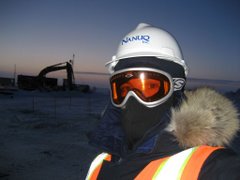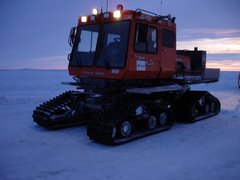LOCATION, LOCATION, LOCATION
This time around I’m a bit South of Tokyo at the Port and Airport Research Institute (PARI) in Yokosuka, Japan (as opposed to the DPRI in Kyoto last summer). I was fortunate enough to have the opportunity to come back to Japan for some more structural/geotechnical/port/earthquake engineering research. So far it’s been a great experience. I’m living in a small but neat apartment about a five minute walk from the lab and right next to Miura Bay (for you history buffs out there that’s where Admiral Perry made his first landing in Japan in 1854). It’s a bit similar to my situation this past summer as Yokosuka is a really nice area that’s close to a large city but not too close. The plus is that I’m right next to the water again. A good chunk of Japan’s coast is heavily industrialized but there are some really beautiful stretches not too far from here. I started out with some killer bike rides but has to put them off the last two weeks as I did battle with the flu (don’t worry it wasn’t bird flu… although I have had an urge to peck corn off of the floor).
Tokyo is of course completely different from Kyoto. It’s larger for starters and has much more of a “Big City” feel to it. But, as with most big cities there are quite a few cultural activities type benefits that come along with the crowds and pollution (museums, etc.) The weather her has been surprisingly mild with most days sunny, breezy, and in the 50s. Unfortunately the predominant weather patterns this time of year mean that good surf is in a completely different area of the Island. Oh well, I guess you can’t have everything.
PEOPLE
The folks in my lab are fantastic. Again, I’m being spoiled by people that speak a good bit of English as compared with my limited knowledge of Japanese. Dr. Koji Ichii is my main contact most days as I plow through some geotechnical numerical modeling for him (see the research section for more info). He’s been very patient and helpful. Shortly after my arrival we went out for a welcome party in Yokohama and ate at the restaurant were they film Iron Chef; what a hoot. Thanks to Prof. Dickenson as the calendars I gave as gifts were a big hit. I was concerned that I’d be a bit bored this time around as I’m not with a bunch of other students from the Western world as was the case this past summer. However, a good friend from OSU has put me in contact with some old college friends of his that live in Tokyo. I’ve been up to visit twice and have had a blast. They’ve been very generous with their time and extended circle of friends. As a result of meeting some of their friends from Australia I’ve become a fan of Vegemite (the variation of a cheese and honey sandwich is my favorite). I've also been fortunate enough to spend more time with my host family, Takeshi, Midori, and Juri Mitomi, from this past summer as they live only about five minutes away. I just can't seem to get enough of their great company and Midori-san's excellent cooking.
RESEARCH
Despite the fact that I’m in the “Structural Dynamics Division” at PARI all the work my group does is geotechnical earthquake engineering for ports and harbors. I’ve decided that it’s a good thing though as I’m likely to spend the rest of my career on the structural side of things. Structural consultants hardly have the time or money to spend learning the ins and outs of “esoteric” (ha ha) nonlinear liquefaction models so I’m happy to have the chance. A good friend and colleague who will remain nameless (Nason) is convinced that I’m slowly but surely “coming over to the dark side”.
I’m essentially performing a parametric study for liquefaction and slope stability analysis of waterfront sea-walls/dikes. The parameters to be varied are slope geometry, soil characteristics, soil layer thicknesses, the Rayleigh stiffness damping factor, and input ground motion. The sites chosen for the study actually exist, were recently addressed for seismic and tsunami inundation concerns, and are fairly typical of this type of structure in Japan. The ultimate goal is to come up with a set of design curves.
The program they use here is called FLIP (Finite element analysis of LIquefaction Process) and was developed by Iai et. al over the last decade or so. The closest type of program back in the states is FLAC which I’m not terribly familiar with so it’s difficult to make an extensive comparison. FLIP though is based on nonlinear plasticity theory and the concept of total shear work done by each discretized element. There is, as most of you port engineer types know, a fair bit of debate as to the applicability of FLAC for seismic analysis of port structures. So, if there are some issues that you think I should be aware of or try to sort out for FLIP please let me know as now is the best time to address them.
Monday, February 9, 2004
Subscribe to:
Post Comments (Atom)



No comments:
Post a Comment